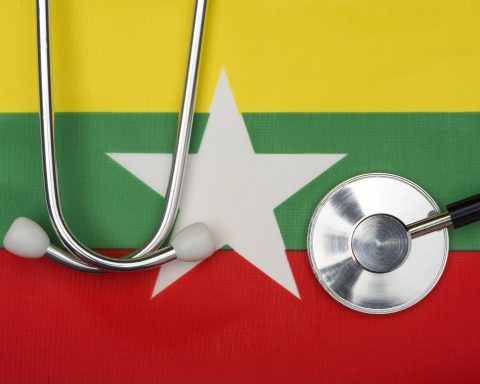
Raghu Raghunath is a GP and Honorary Reader at Hull York Medical School.
At the beginning of my foundation training I had very limited awareness of the diversity of the clinical workforce and was only familiar with ‘traditional’ doctor roles. However, I was surprised to find myself in the midst of a large, multiskilled dynamic clinical team that was responsible for the day-to-day running of the practice.
I was also becoming increasingly familiar with the term ‘clinician’, a term that had been adopted by the practice for any health professional consulting patients. Within this new and evolving model, I found myself working alongside clinicians such as phlebotomists, a prescribing pharmacist, physician associates, advanced clinical practitioners, and specialist nurse practitioners, all contributing to patient care.1
As I settled into the rotation, I increasingly recognised the challenges and gaps to the current training platform that existed against the backdrop of the clinical workforce.
“As I settled into the rotation, I increasingly recognised the challenges and gaps to the current training platform …
Publications and news-spreads confirm that recruitment and conversion rates from foundation training into general practice are at an all-time low, causing a fall and difficulty in the recruitment of doctors, particularly in rural towns or lower socioeconomic areas.2
The experience in general practice has transitioned from the more traditional doctor-led setting to dynamic teams, which many of my peers would already have experienced prior to this shortfall. As a training doctor, I can affirm that I have had the unique opportunity to experience a dynamic setting that appears could be the norm in the future.
It’s perhaps important then, not only for trainees like myself but also for establishments such as foundation deaneries and royal colleges, to formally recognise this evolving trend as the likely future training backbone in primary care.
The training platform where we log competencies through the e-portfolio currently has very little in the way of addressing this challenge in any format. For instance, trainers observing and signing off on clinical and educational assessments are currently categorised as registrars, GPs, or consultants, which in an environment where the majority of staff are non-doctors, trainees will find difficulty in signing off their competences.
My initial impression, after entering the workforce from secondary care, was of the ‘traditional’ GP-led practice, which I experienced during medical school placements and prior work experience. Interestingly, clinical areas are managed and replaced by several experienced clinicians overseeing clinical activities; patients routinely see non-doctors in clinics and, to a large extent, are seemingly satisfied with their care.3
I found transitioning from secondary care to primary care during my training challenging …
My observations as a trainee in this busy inner-city deprived practice appear to suggest that clinicians have overlapping responsibilities with GPs; they review patients during clinics, run and oversee a busy telephone triage list, undertake home visits, alongside supporting and being a port of call for clinical staff to assist in pathways for management, all in tune with the populations’ progression to multimorbidity, polypharmacy, and frailty.4
Additionally, I am also beginning to appreciate and come to terms with the practice reception staff using ‘clinician’ as the generic label for any health professional seeing patients, and across the board all clinicians within this practice consult patients with no selection bias, only adding to this evolving change.
I found transitioning from secondary care to primary care during my training challenging; alongside fulfilling my foundation competencies and addressing my training needs, I was also taking part in the supervision of colleague clinicians, and teaching medical students and physician associates. Equally, I often sought clinical advice and opinions from non-doctor colleagues, which is different to the secondary care setting, where advice would normally be sought from senior doctors.
Observing and immersing myself in this unique setting has blurred the rather artificially obstructive hierarchical attitudes and perceptions that exist across clinical settings, and has made way for interchangeability; for example, a supervisor–supervisee role based on individual skill sets and experience. This diversity has allowed for increased opportunities for peer-to-peer teaching within general practice.
An example where learning from a clinician who has helped or trained me has been with dermatological skin conditions such as dermatitis, eczema, and psoriasis. My knowledge was far stretched back to medical school, and on selecting which topical preparations to use or prescribe I found myself flustered.
… recruitment for more advanced clinical practitioners and physician associates will exponentially rise within primary care over the coming years …
Using this opportunity, I initiated a discussion with our clinical pharmacist (clinician), who not only has an interest in this field but most likely has seen more cases than I have and is aware of new products available on the NHS. This interaction refreshed my knowledge in dermatology through a snapshot bedside teaching session, step-wise management as per guidelines, with emphasis on application techniques — all important when advising patients and issuing medications.
I have also assisted clinicians despite only being in my second year of training. On one occasion, a worried mother of a 6-month-old infant with a maculopapular rash and generally unwell required a clinician to ask for my second opinion. After my clinical assessment and correlation with observations, I advised for strong safety netting and a telephone call the next day to assess progress. This provided confidence and support to my colleague clinician in future management of such cases.
I predict that training within all primary care practices in the future will be similar to this workforce I have experienced. I anticipate that recruitment for more advanced clinical practitioners and physician associates will exponentially rise within primary care over the coming years, and further confirm the increasing and necessary interdependency between clinicians.
The impact of this on training and patient care, though not formally recognised or tested, is nevertheless an existing and future reality. This workforce is developing at pace and there clearly are many unanswered questions, perhaps further research is required to analyse some of the following areas:
1. perceptions and attitudes of foundation trainees and their training; and
2. perceptions and attitudes of the non-doctor ‘training workforce’ and training.
As the workforce develops along the lines of this pathway, I am keen to see the outcome several years hence, and whether the impact on training will be great enough to address these questions!
Summary
• Foundation Year programmes in general practice could help with NHS workforce planning, helping all doctors and non-doctor clinicians to get a better understanding of the rapidly changing general practice; and help potential GPs and practitioners with early training opportunities.
• Foundation Year programmes in general practice offer opportunities for extended skills development for trainees, and may thus help meet much needed capacity issues in general practice for training of a rapidly growing and diversifying workforce (teaching medical students, for example, is a win–win scenario for Foundation Year trainees, medical students, and general practice).
• Development of posts and grasping of opportunities is going at a faster speed than the development of formal training frameworks. Health Education England and the Foundation deanery systems need to keep pace if opportunities are to be maximised.
References
1. Rimmer A. Number of FY2 doctors moving straight into specialty training falls again. BMJ 2019; 364: l523.
2. Checkland K, Spooner S. The future of primary care? Reflections on the Primary Care Workforce Commission report. Br J Gen Pract 2015; DOI: https://doi.org/10.3399/bjgp15X686773.
3. Anthony FB, Surgery A, Hiscock J, et al. General medical services by non-medical health professionals: a systematic quantitative review of economic evaluations in primary care. Br J Gen Pract 2019; DOI: https://doi.org/10.3399/bjgp19X702425.
4. Frailty, polypharmacy and deprescribing. Drug Ther Bull 2016; 54(6): 69–72.
Featured photo by Derek Finch on Unsplash.








